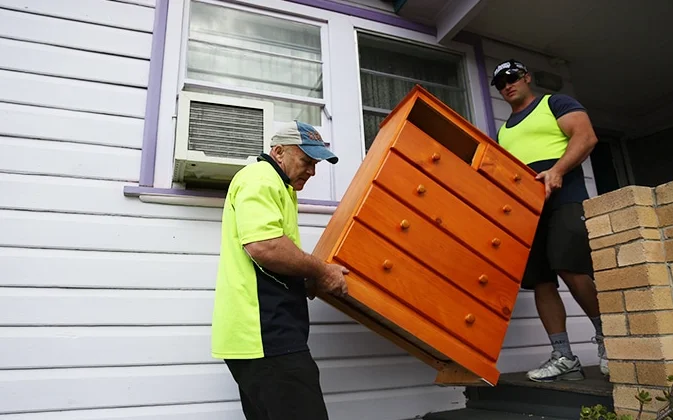Moving items to a different state can be a challenging job. Whether you’re relocating for work, family, or other reasons, transporting large items across long distances requires careful planning and organization. Unlike a local move, interstate furniture relocation involves additional complexities such as cross-state regulations, varying pricing, and the potential for damage. In this article, we’ll explore the common challenges of moving furniture between states and provide tips to help make the process smoother and more manageable.
1. Choosing the Right Moving Company
One of the first steps in moving furniture across state lines is selecting the right moving company. It’s important to find a company that specializes in long-distance moves and has experience with furniture transport. Many companies offer both full-service and DIY moving options, so it’s essential to understand your needs and budget.
When looking for the right movers, consider the level of professionalism and customer service they provide. Make sure they provide protection for your furniture in case it gets damaged or lost while being moved. You can find reliable moving companies like https://threemovers.com/ that handle state-to-state furniture transport.
2. Understanding the Cost of Moving Furniture Between States
Interstate moving costs can vary significantly depending on the distance, volume of furniture, and the type of services you require. Moving companies usually set their prices based on how heavy your things are, how far you are moving, and if you choose extra services like packing and unpacking.
To get a precise quote, most companies will need to assess the amount of furniture you’re moving and any special requirements, such as the need for fragile item handling or disassembly. To avoid unexpected costs, ask for a detailed estimate and inquire about potential hidden fees, such as fuel surcharges or extra charges for long carry distances.
3. Packing and Protecting Your Furniture
Proper packing is key to ensuring your furniture arrives in good condition. Moving furniture across state lines exposes it to a longer journey, and the risk of damage increases if your items aren’t well-packed. Consider these packing tips:
- Disassemble Large Pieces: Whenever possible, disassemble large furniture such as beds, tables, and bookshelves. This reduces the risk of damage and makes the furniture easier to pack and transport.
- Use Protective Materials: Invest in moving blankets, bubble wrap, and furniture pads to shield your items from scratches and dings. Wrapping furniture tightly in protective material ensures its safety during the move.
- Label Everything: Make sure each box or wrapped item is clearly labeled with the type of furniture inside and which room it belongs to. This will help movers place items in the right locations and prevent confusion during unloading.
4. Navigating State-to-State Regulations
Each state has its own set of regulations when it comes to interstate moving. This may include tolls on highways, specific moving permits, or rules regarding vehicle weight limits. If you’re hiring a professional moving company, they should handle these details for you, but it’s a good idea to be aware of any local rules that may impact your move.
Be sure to check whether your moving company has the necessary permits and insurance for transporting items across state lines. If you’re moving yourself, you will need to research the road rules and requirements for your specific route.
5. Timeframe and Scheduling
Long-distance moves can take several days, depending on the distance between your old and new home. It’s crucial to schedule your move well in advance and allow ample time for any potential delays. Keep in mind that moving companies often experience peak seasons, such as during the summer months or at the beginning and end of the month, which can lead to higher demand.
You should also plan for the time it will take to load and unload your furniture. If you’re moving large or delicate items, additional time may be required for handling, which should be factored into your overall move schedule.
6. Insurance and Liability
Insurance is an essential aspect of interstate furniture moving. Check with your moving company to see what type of insurance coverage they provide. Basic liability coverage is often included, but it may not be enough to fully protect valuable or fragile items. You can purchase additional coverage, such as full-value protection, for greater peace of mind during your move.
Conclusion
Moving furniture from state to state is a challenging but manageable task when approached with the right planning and resources. By choosing a reliable moving company, understanding costs, properly packing your items, and being aware of state-specific regulations, you can ensure a smoother, less stressful moving experience.
By following these steps, you’ll be better prepared to handle the complexities of moving furniture between states, ensuring your valuable possessions arrive safely at your new home.

Shannon Reyes is a seasoned writer with a knack for crafting engaging blogs on a variety of service industries, including plumbing, cleansing, moving, pest control, and roofing. With a keen eye for detail and a passion for helping readers navigate complex topics, Shannon brings her expertise to life through informative and accessible content.










